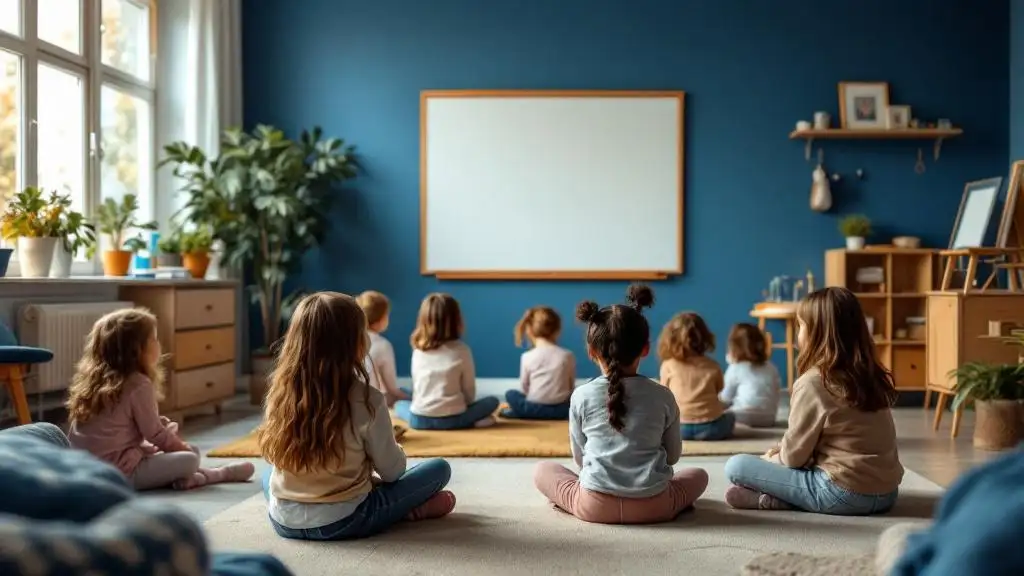
Understanding the Power of Speech Therapy
Speech therapy plays a vital role in improving articulation clarity, enabling individuals to communicate effectively across social, academic, and personal contexts. By addressing speech sound disorders and related issues, speech-language pathologists employ evidence-based techniques and individualized strategies skilled at fostering clearer, more confident speech. This article explores how speech therapy works to enhance articulation and what approaches are most effective in achieving measurable improvements.
The Fundamentals of Articulation and Speech Sound Disorders
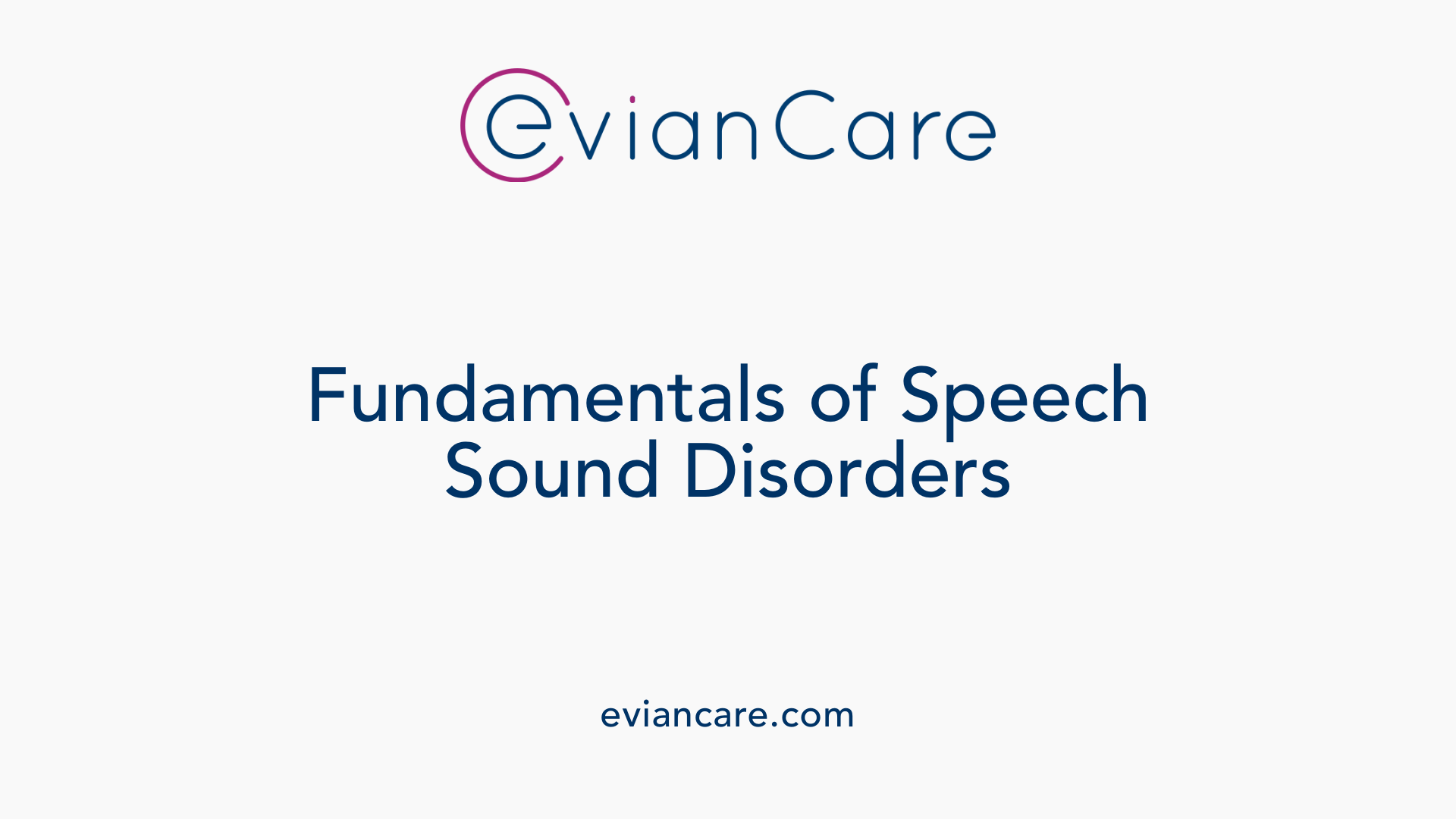
What are articulation and speech sound disorders?
Speech sound disorders (SSDs) involve challenges in perceiving, motor producing, or phonologically representing speech sounds in children. These issues can manifest as trouble pronouncing specific sounds clearly or inconsistently. Articulation disorders, a subset of SSDs, specifically refer to difficulties with producing sounds correctly, impacting overall speech intelligibility.
Common problems include lisps, mispronunciations, substitutions, omissions, distortions, or additions of sounds within words. These errors may be due to developmental delays, neurological conditions, physical anomalies, or environmental influences. For example, a child might substitute a /w/ for an /r/ or omit the /s/ sound, leading to confusing speech.
Types of articulation errors
Many children experience different types of speech errors that can be addressed through speech therapy. These include:
- Substitutions: replacing one sound with another, such as saying /w/ instead of /r/
- Omissions: leaving out sounds, like dropping the /k/ in "cookie"
- Distortions: producing sounds in an unclear way, like a lisp affecting /s/ or /z/
- Additions: adding extra sounds, which slow down speech or make it ambiguous.
Others may present with structural or motor issues involving the tongue, lips, or jaw, affecting their ability to produce sounds correctly. These challenges might originate from developmental delays, neurological impairments, or physical conditions such as cleft palate.
Causes of speech sound disorders
The origins of speech sound disorders are varied. Common factors include:
- Developmental delays in speech or language milestones
- Neurological conditions affecting speech muscles or coordination
- Structural anomalies like cleft palate or dental malocclusions
- Environmental influences and lack of sufficient language exposure
- Physical impairments or motor control issues
Proper evaluation by a speech-language pathologist is crucial to determine the underlying cause and to plan effective therapy strategies.
How does speech therapy improve articulation clarity?
Speech therapy helps improve articulation clarity through a variety of targeted techniques. Therapists conduct assessments to identify specific speech errors, which guides personalized interventions. These include:
- Articulation exercises focusing on the correct placement of the tongue, lips, and teeth
- Phonological contrast approaches that distinguish correct versus incorrect sounds
- Motor practice, such as tongue twisters and reading aloud, to enhance muscle coordination
- Use of visual and auditory feedback, including mirror exercises and real-time sound analysis
Therapy progresses through structured levels—from isolating sounds to syllables, words, phrases, sentences, and conversation. The goal is to establish correct sound production, generalize skills to spontaneous speech, and stabilize accurate pronunciation.
Culturally and linguistically appropriate strategies are emphasized, ensuring relevance across diverse backgrounds. Ultimately, speech therapy increases speech intelligibility, boosting confidence and facilitating better social and academic interactions.
| Error Type | Description | Common Examples |
|---|---|---|
| Substitutions | Replacing one sound with another | /w/ for /r/ |
| Omissions | Leaving out sounds | Omitting /s/ in "sun" |
| Distortions | Producing unclear or inaccurate sounds | Lisp affecting /s/ |
| Additions | Inserting extra sounds into speech | "bu-lue" instead of "blue" |
This comprehensive process supports both children and adults in overcoming speech sound challenges, enhancing overall communication skills.
Approaches and Techniques in Speech Sound Therapy
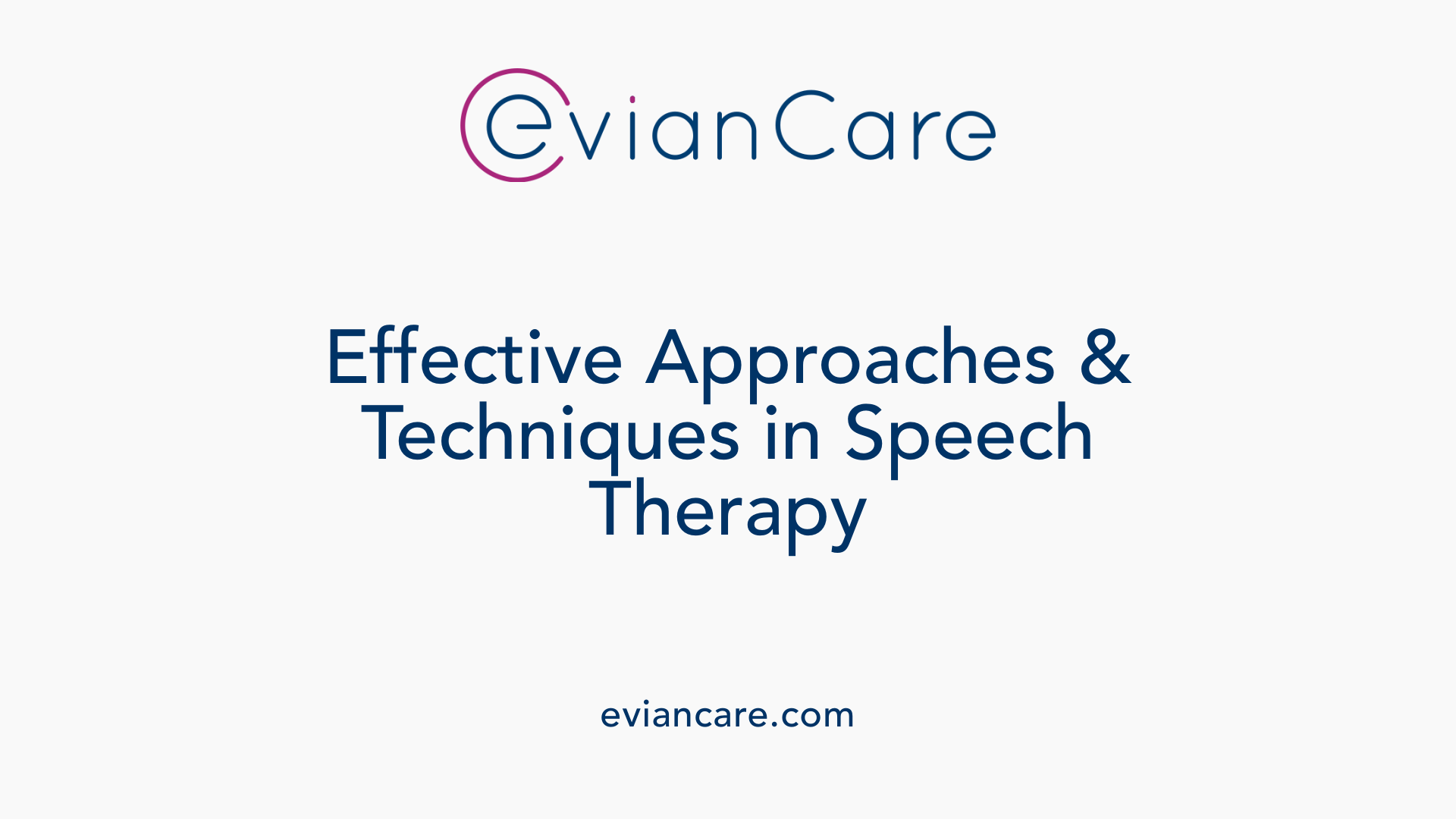
What techniques and methods are used in speech therapy to improve speech clarity?
Speech therapy uses a broad range of methods to help individuals improve the clarity and accuracy of their speech sounds. These approaches are tailored to target specific speech errors and facilitate better communication.
One fundamental strategy is articulation therapy, which focuses on improving the precise movement of the tongue, lips, and jaw to produce clear sounds. Therapists often use modeling, where they demonstrate the correct pronunciation, and imitation, encouraging clients to replicate these sounds. Visual feedback tools like mirrors and flashcards allow individuals to observe their mouth movements and self-monitor their speech.
Phonological approaches such as minimal pairs involve practicing pairs of words that differ by only one sound (like 'pill' and 'bill') to highlight contrast and facilitate correct sound production. The cycles approach gradually introduces target sounds and moves through establishment, generalization, and maintenance phases, ensuring continuous progress.
Speech sound drills, such as repetition exercises and tongue twisters, strengthen muscle control and promote rapid sound production. These are often delivered through engaging activities and games to maintain motivation.
Auditory discrimination training helps clients distinguish between correct and incorrect sounds, fostering awareness and self-correction. Techniques like modeling and imitation are used in conjunction with tactile cues—such as placement or movement of the speech articulators—to improve coordination.
Implementing sensory feedback tools, including biofeedback or ultrasound for visualizing tongue movements, can enhance understanding and control of speech mechanisms.
Furthermore, incorporating play-based interventions, storybook activities, and sensory feedback tools makes therapy enjoyable and effective, especially for children. These methods promote the transfer of skills from therapy sessions to everyday conversations.
Ongoing practice outside therapy, including home activities and parental involvement, supports skill retention and generalization.
In summary, speech clarity can be improved through a combination of articulation exercises, phonological contrast therapy, auditory discrimination, visual and tactile cues, and engaging, evidence-based activities—all personalized to the individual's needs.
Processes and Goals of Speech Therapy for Clearer Speech

What processes are involved in speech therapy for enhancing speech clarity?
Speech therapy aimed at improving speech clarity starts with a detailed assessment to pinpoint specific errors in speech sound production. The assessment involves evaluating speech sound inventories, analyzing speech samples, and conducting oral motor examinations to determine issues like substitutions, omissions, distortions, or additions.
Once the difficulties are identified, a personalized treatment plan is developed. This plan sets targets for producing sounds accurately in various contexts, beginning with isolated sounds, then progressing to syllables, words, phrases, and conversational speech. Techniques such as articulation drills, minimal pairs practice, interactive games, and reading aloud activities are employed to reinforce correct sound patterns.
A central part of therapy involves using visual cues, feedback, and naturalistic practice to help individuals monitor and correct their speech actively. Professionals incorporate strategies like mirror exercises to observe mouth movements, verbal modeling, andauditory discrimination activities.
In addition, pacing and voice techniques—such as controlled pauses, volume adjustments, and clear articulation—are practiced to improve speech flow and intelligibility. Therapists often include phonological contrast methods to highlight differences between similar sounds and motor practice exercises to strengthen oral muscles.
Throughout the process, continuous monitoring, feedback, and caregiver involvement are fundamental. These ensure that progress is sustained and that speech becomes more automatic and natural. The ultimate goal is to produce speech that is clearly understood in everyday settings, boosting confidence and social engagement.
What are the main goals of speech therapy for improving speech clarity?
The primary aim is to increase speech intelligibility — the perceptual judgment of how well speech is understood by listeners. Achieving clearer speech involves not only correct articulation but also proper pacing, voice modulation, and prosody.
Therapy also aims to build confidence in individuals, enabling them to communicate more effectively in social and academic situations. The ultimate objective is for speech to sound natural, seamless, and easy for others to understand.
Other goals include reducing speech sound errors like lisps or mispronunciations of sounds such as /s/, /r/, or /th/. Additionally, therapy helps develop greater consistency in speech production across different contexts, which supports ongoing communication success.
| Process Step | Technique | Expected Outcome |
|---|---|---|
| Assessment | Speech sound inventories, oral motor exams | Identification of errors |
| Planning | Goal setting, individualized treatment development | Clear direction for therapy |
| Therapy | Articulation drills, visual feedback, reading practice | Better accuracy and fluency |
| Generalization | Conversation and real-world practice | Natural and consistent speech |
| Monitoring | Ongoing assessment and caregiver involvement | Sustained progress |
By combining these processes and strategies, speech therapy seeks to help individuals speak more clearly and confidently, positively impacting their social interactions, academic achievements, and self-esteem.
Common Articulation Disorders and Their Treatment Approaches
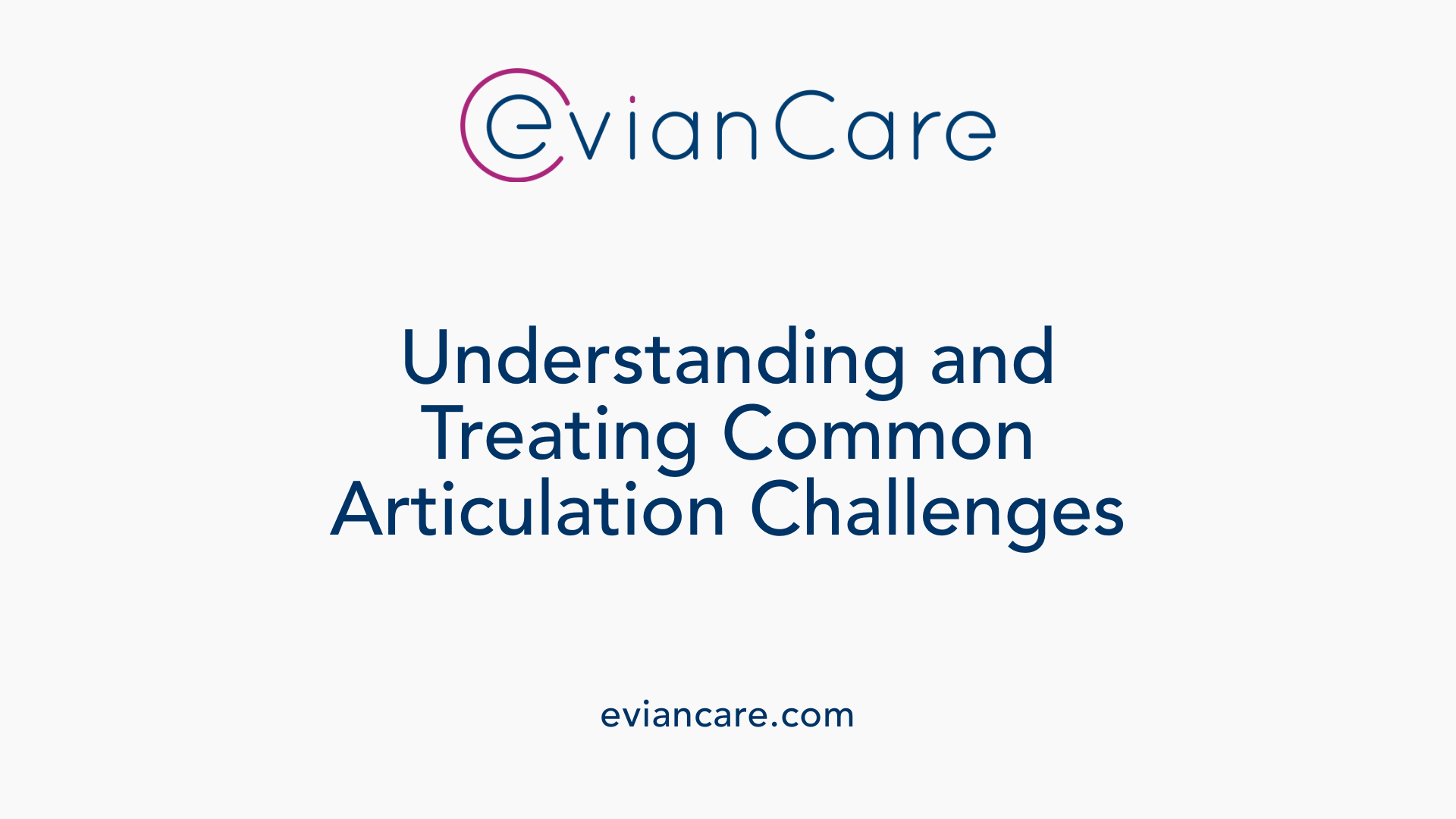
What are common speech articulation disorders and how are they treated?
Articulation disorders are difficulties in producing specific speech sounds clearly and accurately, which can affect overall speech intelligibility. Some common examples include lisps, where the /s/ and /z/ sounds are distorted, or Rhotacism, characterized by an excessive or misplaced /r/ sound. Other issues involve substitutions, omissions, or distortions of consonants and vowels, leading to speech that is less understandable.
These disorders are usually identified through detailed assessment methods. Speech-language pathologists often analyze speech samples, perform oral motor examinations, and observe sound production in various contexts. These evaluations help pinpoint errors such as substitutions, omissions, distortions, or additions of sounds.
Treatment approaches are tailored to each individual, employing evidence-based techniques. Articulation drills, where specific sounds are practiced repeatedly, are fundamental. Phonological therapies, like using minimal pairs, help children distinguish between similar sounds. Naturalistic interventions involve practicing speech in everyday situations to improve generalization.
Visual cues, gestures, tactile feedback, and biofeedback tools are commonly incorporated into therapy sessions. These methods enhance awareness of sound placement and improve motor control of speech muscles. For instance, visual aids like mirror exercises allow individuals to see mouth movements, aiding self-monitoring.
Early intervention is crucial. Starting therapy at a young age generally leads to better outcomes, preventing long-term speech difficulties. Consistent practice both in therapy sessions and at home supports skill maintenance and transfer to real-life conversations.
Overall, managing articulation disorders requires a combination of thorough assessment, individualized treatment plans, and ongoing practice to achieve clear, confident speech. This comprehensive approach fosters improved communication, social confidence, and academic success.
Differentiating Articulation and Phonological Disorders
What is the difference between phonological and articulation disorders?
Understanding the distinction between articulation and phonological disorders is crucial for effective treatment. Articulation disorders involve difficulties with the physical production of speech sounds. Children or adults with articulation issues struggle to position their tongue, lips, or palate correctly, which may result in substitution, omission, distortion, or addition of sounds. For example, a person might consistently substitute a /w/ for an /r/ or have a lisp affecting /s/ sounds.
In contrast, phonological disorders relate to the way sounds are organized and used within the language system. Individuals with these disorders do not necessarily have trouble with the physical act of producing sounds but instead follow incorrect sound patterns or rules. For instance, they might simplify complex consonant clusters (like saying 'top' instead of 'stop') or substitute sounds based on common phonological processes.
While articulation errors tend to be isolated to specific sounds, phonological errors are spread across patterns that affect multiple sounds, influencing overall speech intelligibility. Diagnosing the specific nature of the disorder requires a careful assessment by a speech-language pathologist.
Impact on speech intelligibility and assessment approaches
Articulation difficulties can make speech less clear but are often easier to correct because they focus on improving specific sound productions through targeted exercises. Meanwhile, phonological disorders involve broader patterns that may require pattern correction and teaching of sound rules.
Assessment methods differ accordingly. Articulation disorders are often evaluated through speech sound inventories, where the clinician checks which sounds a person can produce correctly. Visual and auditory feedback, imitation, and structured drills are common therapy strategies.
For phonological disorders, assessment includes analyzing speech samples for pattern errors and using tools like phonological process analyses to identify errors like cluster reduction or fronting. These insights guide intervention plans that focus on modifying underlying sound rules.
Targeted intervention strategies for each disorder
Therapeutic approaches vary for articulation versus phonological disorders. Articulation therapy emphasizes teaching correct sound placement, use of visual cues, mirror exercises, and practice in various contexts to establish accurate motor production of sounds. Techniques such as minimal pairs and articulation drills are common.
In contrast, phonological therapy targets teaching the rules governing sound patterns through methods like phonological process therapy, cycles, or play-based activities that help generalize correct patterns across words and speech contexts.
Both approaches aim to enhance speech intelligibility but do so through different pathways. Clear assessment and understanding of each disorder type enable targeted therapy, whether focusing on physical sound production or reorganizing sound patterns, ultimately supporting better communication outcomes.
The Role of Early Intervention and Ongoing Practice
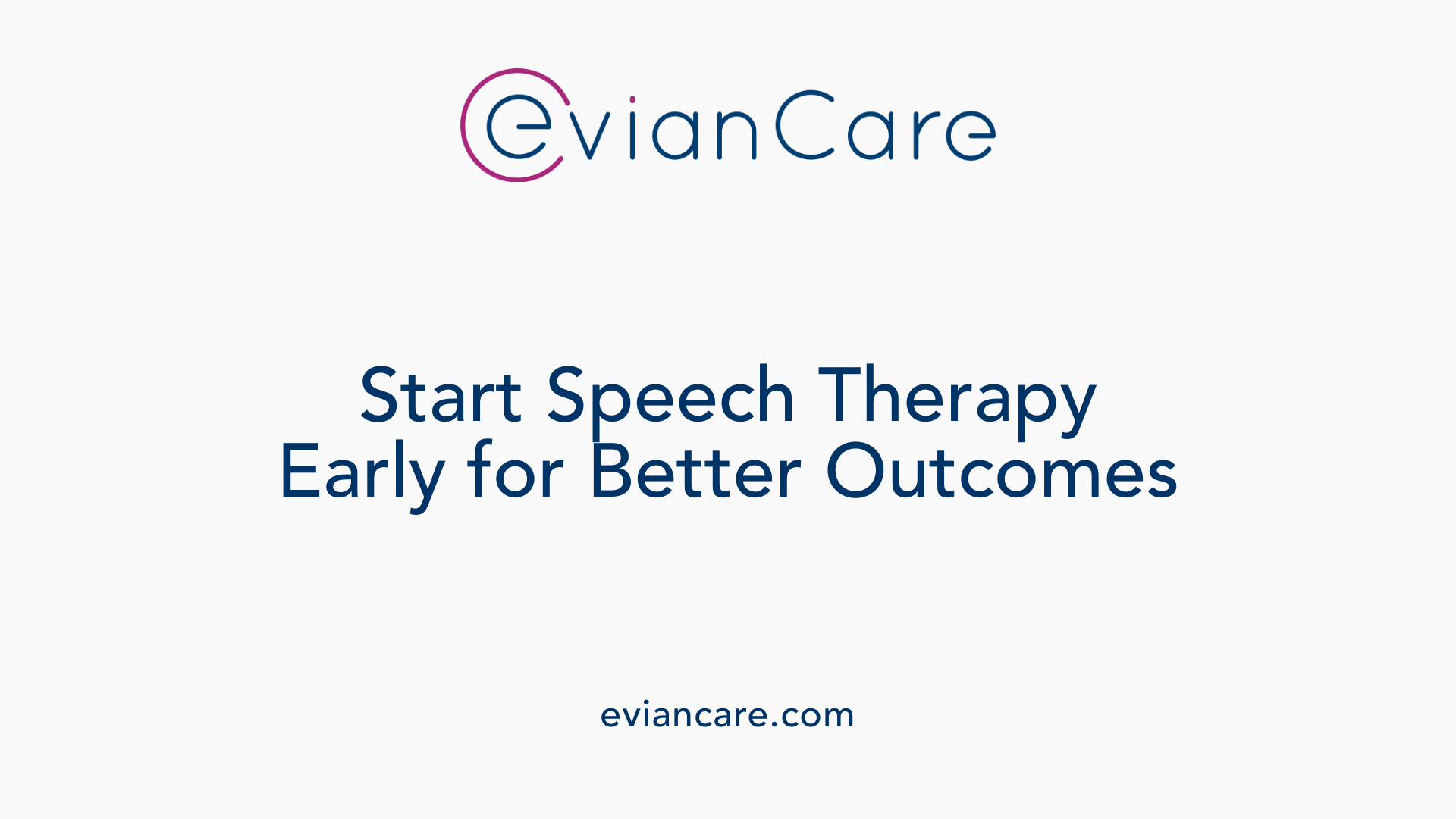
Why is early diagnosis important, typically between ages 2-4?
Early detection of speech sound disorders allows for timely intervention, which is crucial for more effective treatment outcomes. During these formative years, children’s speech and language systems are highly adaptable, making it an ideal time to address articulation challenges.
Diagnosing speech sound issues early enables speech-language pathologists to create personalized therapy plans that cater to the child's developmental stage. It also helps prevent the development of secondary issues such as poor social skills or academic difficulties stemming from communication barriers.
How does early therapy improve outcomes and prevent ongoing issues?
Intervening early improves the chances of establishing accurate speech sound production before problematic patterns become ingrained. Timely therapy helps children develop clearer pronunciation, increasing their intelligibility and boosting confidence.
Starting therapy during the early years can significantly reduce the need for more intensive or long-term treatments later in life. It also minimizes the risk of lasting communication challenges that could affect educational achievement and social interactions.
What is the role of home practice, parental involvement, and ongoing assessment?
Step-by-step improvement requires active involvement beyond the therapy sessions. Parents and caregivers play a vital role by practicing targeted activities at home, such as repetition of sounds, reading aloud, and engaging in language-rich environments.
Home practice consolidates skills learned during therapy and promotes generalization to everyday settings. Consistent assessment and feedback from speech therapists help monitor progress and adapt strategies as needed, ensuring continuous advancement.
How do engaging activities support speech development?
Activities like tongue twisters, storytelling, singing, and word games make practice enjoyable and motivating. They also stimulate different areas of the brain involved in speech and language processing.
Using fun methods like singing not only improves rhythm and pitch but also enhances memorization and auditory discrimination. Storytelling provides context for language use, while tongue twisters challenge articulation precision.
| Activity Type | Purpose | Benefits |
|---|---|---|
| Tongue twisters | Practice rapid articulation of specific sounds | Improves agility and accuracy in sound production |
| Storytelling | Encourage sentence formation and expressive language | Builds vocabulary and confidence |
| Singing and music | Develop rhythmic and pitch control; reinforce speech patterns | Enhances auditory discrimination and memory |
| Word games | Increase vocabulary, phonological awareness, and pronunciation skills | Engages children and reinforces learning |
Incorporating these activities into daily routines, along with professional guidance, creates a comprehensive approach to improving articulation and overall communication skills.
The Impact of Tailored Speech Therapy on Communication Skills
Effective speech therapy is essential in enhancing articulation clarity, empowering individuals to communicate with confidence and precision. With personalized approaches, engaging techniques, and consistent practice, speech-language pathologists help clients overcome speech sound errors, improve their intelligibility, and foster better social and academic interactions. The ongoing development of innovative methods and early intervention strategies ensures that speech therapy remains a vital resource for achieving clear, effective communication in diverse populations.
References
- Speech Sound Disorders: Articulation and Phonology - ASHA
- The Power of Speech Pathology in Improving Communication
- Clarity of Speech: Proven Strategies for Clear Communication
- Improve Your Speech: Articulation Assessment in Speech Therapy
- Articulation Therapy | Better Speech Online Therapy
- Speech Therapy: What It Is & How It Works
- Top 10 Effective Speech Therapy Exercises - All Together ABA
- 15 Articulation Goals for Speech Therapy - Care Options for Kids
- Articulation Speech Therapy for Children and Adults
- 31+ Articulation Goals for Speech Therapy (Goal Bank)




